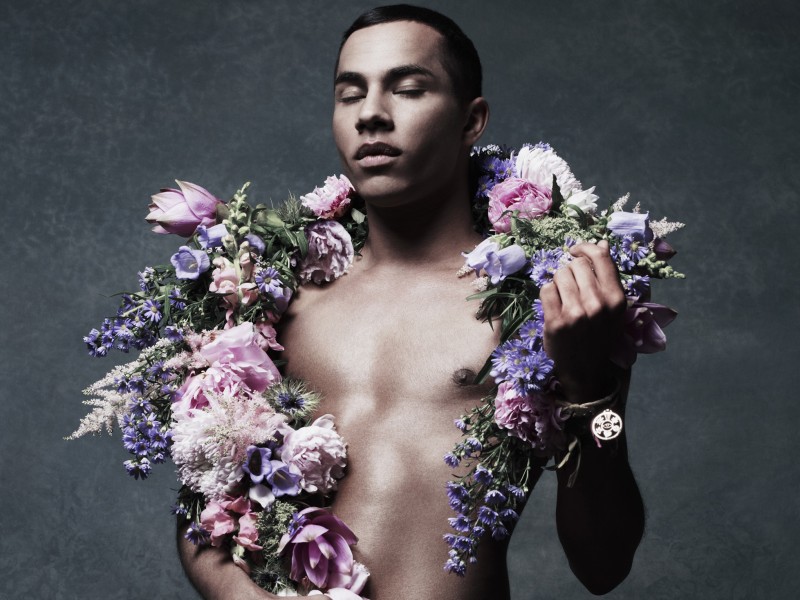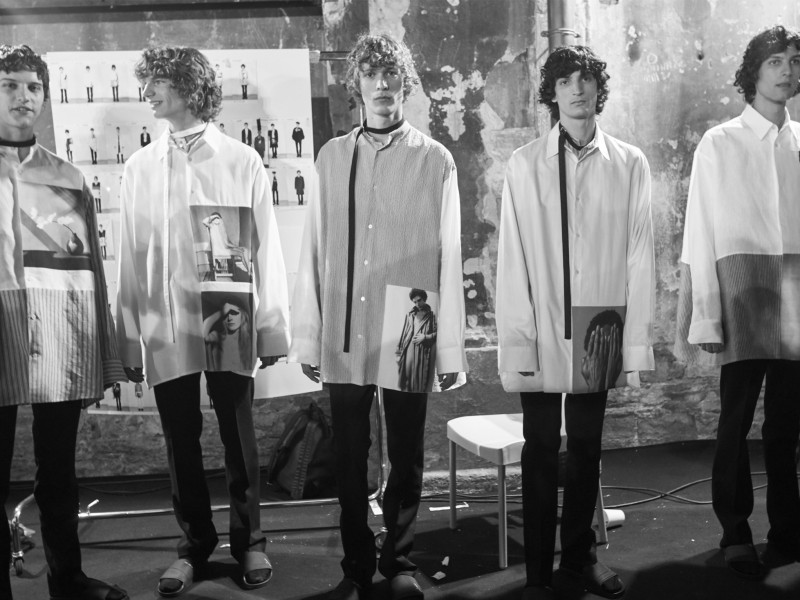When 30-year-old Yves Saint Laurent ventured to Marrakesh for the first time in 1966, he became so infatuated with the ‘red city’ that he often returned with his long term companion and business partner, Pierre Bergé, eventually buying a home that once belonged to painter Jacques Majorelle. It is in this Moroccan city that the legendary fashion designer and couturier would go on to envision some of the most memorable creations of his 40 year career. It seems fitting, half a century later, that the French-Algerian’s profound connection with his adoptive country is captured through a new museum celebrating the 21st century fashion icon.
Launching in September 2017, Musée Yves Saint Laurent Marrakech (MYSLM) will house a permanent showcase of Saint Laurent’s work, as well as a temporary exhibition space, a 130 seat auditorium, a café and restaurant. It also houses a bookshop and a research library with collections of fashion, botany, literature, Berber culture and Arab-Andalusian history readings.
The French architectural firm Studio KO, were tasked with designing the ambitious 4,000 square metre museum, after its founding architects Olivier Marty and Karl Fournier were hand picked by Bergé. Marty and Fournier have a strong legacy in fashion and leisure having previously designed the Balmain flagship in New York and London’s Chiltern Firehouse, as well as Bergé’s holiday home in Morocco. “Pierre is faithful when it comes to choosing who to work with,” Marty tells me over the phone from his Paris studio, “and because Karl and I collaborated with him before, we already shared intimacy. He knew that we had the ability to create a project that would be contemporary and extremely well detailed. This building could never exist anywhere else but Morocco.”
The architects turned to the Fondation Pierre Bergé-Yves Saint Laurent—the commissioners of the MYSLM project—to pore over the extensive Yves Saint Laurent (YSL) archive, eventually coming up with a concept that saluted both the Moroccan spirit and the man credited for producing some of the most iconic collections in the history of fashion.
The museum’s tectonics were designed to appear like a garment in action, with the exterior constructed to mirror the intricate angles and curves of the YSL aesthetic. On the architectural vision, which began in September 2015, Marty says “the façade acts like weavings of fabric. There are these different lines of brick motifs that run all around the building, wrapping on top of each other like textiles. We also shaped the round patio to mimic a dress, so it looks like this silhouette with very sharp angles. It is as if the building itself was cutting up the fabric to make an outfit.”
Costing €15 million to create, the site is framed by a foundation of stand alone concrete arches. The exterior is orbited by earthen hued terrazzo, terracotta bricks made from red Moroccan earth and local stone fragments, while the interior floors and walls are laid with off-white terrazzo.
“Morocco is a very exciting country to play with,” says Marty, whose affinity with the area deepened after Studio KO gained approval for their earlier projects in the country, leading the team to open a local office. “There is this amazing tradition of craftsmanship, or artisanat, due to a strong urge in the Moroccan soul to make things, to build things. So to surround myself with the culture of bricks, plaster, tiles, wood and gypsum makes me appreciate the important role that architecture plays here.” He also relates to Bergé and Saint Laurent’s enchantment with the country. “The couple saw a lot of depth to Morocco—they fell in love with the people, their culture, their food … and they found a way to maintain that love.”
MYSLM is situated on the aptly named street Rue Yves Saint Laurent, adjacent to Jardin Majorelle, a botanical garden best known for its intense cobalt walls and kaleidoscopic assembly of 300 plant varieties. Saint Laurent, who once called Morocco the country that “taught me colour”, purchased the 12-acre wonderland in 1980 to prevent realtors from turning the estate into a hotel complex. The garden became his sanctuary—it was within these confines that the couturier spent his final years and where his ashes were scattered after he passed away in 2008.
The museum’s launch will coincide with the unveiling of Musée Yves Saint Laurent Paris, currently the site of the foundation. For 12 years up until its public closure in April 2016, the institution held over 20 art, design and fashion exhibitions honouring both Saint Laurent and other creative figures. For its new phase, the Paris arm will be entirely devoted to Saint Laurent’s work, giving fans a glimpse into the historical and contextual recreation of his atelier and early life. “The Marrakesh museum,” Marty reveals, “will act as the jewellery box filled with things that inspired Yves”. This paired ‘museumification’ of his anthology remains a testament to Saint Laurent being the only couturier of his generation to methodically archive an entire oeuvre in the fashion circuit, from 1962 until his retirement in 2002.
The MYSLM program will launch a 60 piece exhibition entirely consisting of Saint Laurent’s most iconic works, such as the Mondrian dress. The items are presently stored in the foundation’s monolithic inventory, which flaunts 5,000 haute couture outfits and 15,000 accessories, as well as thousands of assorted objects including drawings, photographs, books and collection boards, all belonging to a fashion luminary who often looked to Morocco for artistic stimuli. “Yves designed many of his collections in Morocco,” Marty echoes, “it was one of the few places in the world where he felt relaxed and protected”.
While Studio KO’s architectural style of “opacity and textures” is evident in the MYSLM aesthetic, this project feels like a whole new chapter for the practice. “For the first time, we are constructing something from scratch in an urban site. Also, because this is a fashion based museum, we need to have a focus on luxury and really take this adventure to a new level,” reflects Marty. “The Balmain project taught us a lot about architectural language—we were able to use this experience to build a museum with a sense of vanity that sets it apart from our previous works.”
“Yves had the talent to change the way people felt when wearing his clothes,” Marty continues. “So when the museum finally opens I want people to enter the building—regardless of whether they know much about architecture, or art, or fashion—and be able to experience the same emotion and sensation. After all, this is what is so great about the mixture of art, fashion and architecture: it creates emotion.”
For more visit museeyslparis.com
Related Features
-
70
-
-
-

